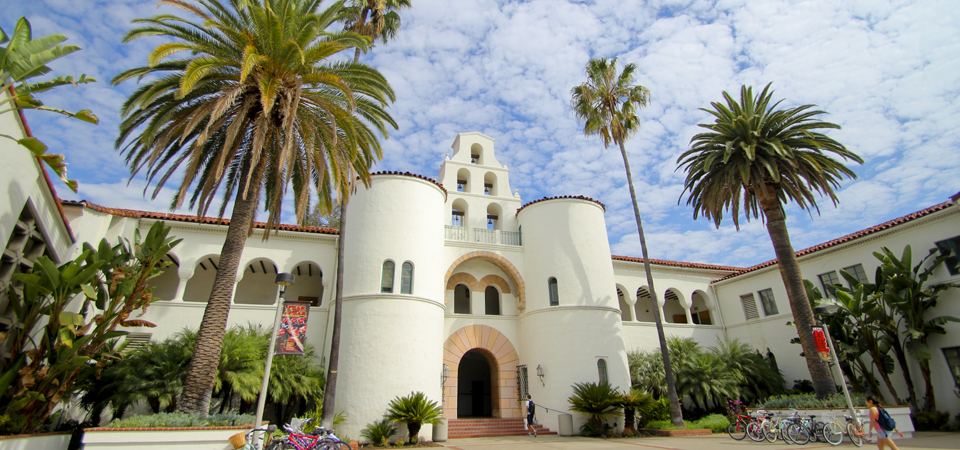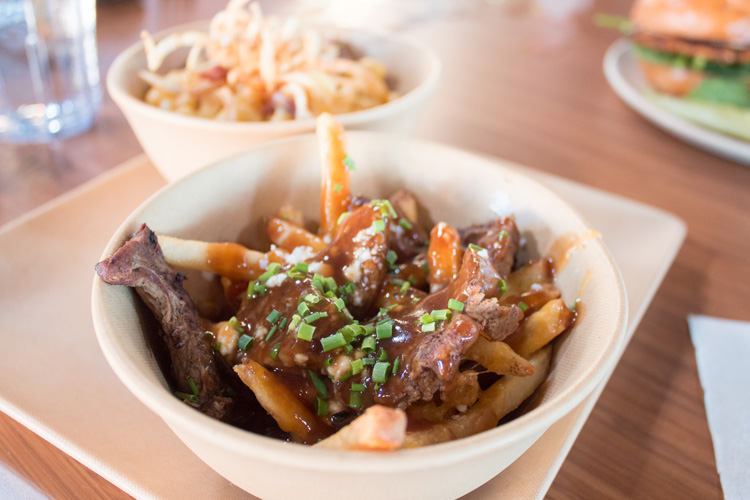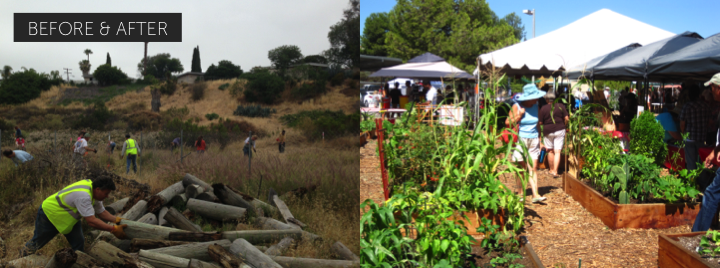Years in the industry: 24
Notable Awards: Chaine De Rotisseurs Chef, 2 Gold / 6 Silver / 1 Bronze Medals through American Culinary Federation, 2nd Place in Pasta at World Food Championships
Employer: Executive Chef at San Diego State University
Number of cooks/chefs he leads: Approx. 450 employees
Typical work week: 5 days / Monday through Friday plus special events
Typical hours: 8am-5pm
Best thing about being an university executive chef: “The ability to balance home life and work life. I can see my son grow up. Having holidays pretty much off isn’t bad either!”

What it’s like to be a University Chef
Meet Edward Glebus. He’s the Executive Chef behind campus dining at San Diego State University (SDSU). Now, admit it, the very thought of college cuisine stirs up horrible memories of cheap pizza, overcooked veggies, and discount ramen. Absolutely nothing Alice Waters would approve of, unless of course, she was attending SDSU.
See, Ed is classically trained in the cooking techniques made popular by Italy’s Slow Food movement, and a big supporter of Farm-to-Table. So much, that he is currently working with the College Area Community Garden (CACG) to infuse more local produce into the campus’ cuisine. CACG was started a few years back to educate the community on everything from organic farming to rainwater collecting to composting. (More information about CACG near the end of this article.)


Currently much of the food grown there is either consumed by participants, or donated to local food banks. Not all of the garden’s 120 plots are even being used. If Ed get’s his way–and we hope he does–he’ll begin farming 10 of them as a pilot program sometime this year. He needs approval from the university’s health and safety department.
If approved, he expects to be harvesting campus-grown produce by this fall. “But I really want to leave that garden for the community. I don’t want to go in and take it over as mine. I want to start there, maybe grow it to 20 or 30 plots, and then from there look at moving the whole thing off-site, to a farm that we buy,” he explains. A reasonable goal as SDSU Dining feeds some-30,000 students daily.

In the meantime, Ed is focused on raising the bar for the 500 employees who make up SDSU’s dining staff. He wants them certified, and he admits, that it is an ambitious goal. He himself holds the Certified Executive Chef certification from the American Culinary Federation (ACF). Of course, you don’t take 2nd place in pasta at the World Food Championship because you like things easy.
“You’re only as good as your last meal,” he quips, and went on to explain how menu writing is one of the most important talents a chef can have. It’s also part of the ACF certification, which is why he is pushing his staff to apply.
“During the test for the executive chef level, you have to create a menu from of a given basket of ingredients, a three-course menu. So you have to have an appetizer, a salad, and an entree. And it has to flow,” he says, “You don’t do a Spanish paella and then an Asian dish. Well, you could, but it doesn’t make sense.”
A focused menu is important.

SDSU Dining feeds a lot of people, and daily. Chefs that have mastered menu writing will be more successful at handling the university’s dietary challenges. For example, students that have restrictions, such as being vegan or who need to eat gluten-free. And they cater to these diets at kitchens across the campus. Speaking of cater, Chef Glebus and SDSU Dining is also responsible the university’s craft services. For instance, they provide catering services to acts like One Direction and Lady Gaga, when those acts visit the campus’ Viejas Arena.

“Chefs that challenge themselves to go and get certified, I’ll mentor them as much as I can,” he explains, “But as a proctor for the exam, there is only so much I do.” Certification takes about a year and as of now, only Ed and one other chef is certified.
So where did this passion for food and community come from? You could say it is in his genes. Ed’s grandmother was a successful restaurateur in Massachusetts.
Ed admits, though, campus life definitely has its privileges. By having other chefs on site, they are able to support each other, and move around as needed. They can move from kitchen to kitchen, based on how busy each one is. A luxury you don’t have within an independent restaurant.
“If your dishwasher calls out, sometimes you’re the chef and the dishwasher,” he laughs. Plus, you get Friday nights off. Something you never enjoy as a restaurant chef.
Of course, independent chefs seeking the kind of community Glebus has built, look no further than Chefs Roll. You can connect to Chef Ed Glebus here.
About College Area Community Garden
The COLLEGE AREA COMMUNITY GARDEN (CACG) is a community-based organic garden/urban farm with an attractive network of raised bed garden plots and related areas that foster a greater sense of community between local residents and SDSU affiliates. The garden is set up to be sustained in part by charging low fees for yearly memberships and plot leasing.
In partnership with San Diego State University faculty and staff and other local subject matter experts, the community garden will sponsor educational workshops and conduct classes on organic farming practices, planet-friendly agricultural methods and water-wise collection and irrigation methods. The workshops and classes will promote healthy soils, water, food crops and eco systems. CACG is coordinating efforts with other local and regional community gardens as well as local, state and national organizations.

Garden Facts:
- CACG has 250+ different volunteers (45 of which are students) since opening Summer 2014.
- Their Garden Board consists of 7 hard working elected unpaid leaders.
- They have 15 “Key Volunteers” acting as work party supervisors & orientation session leaders.
- CACG has about 40 garden memberships and 22 paid plot leases to date.
- Member/gardeners are required to volunteer 2 hours a month.
- CACG has a 26 tree orchard & all raised beds with over 50 varieties of veggies and fruit trees.
- Water use is very low per raised bed. Gardeners are required to hand water with a water efficient wand.
Learn more College Area Community Garden at http://www.collegeareagarden.org/. Information provided by Henry Bertram, President of CACG.


